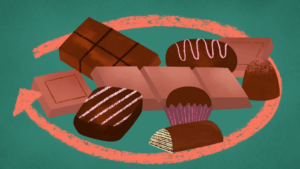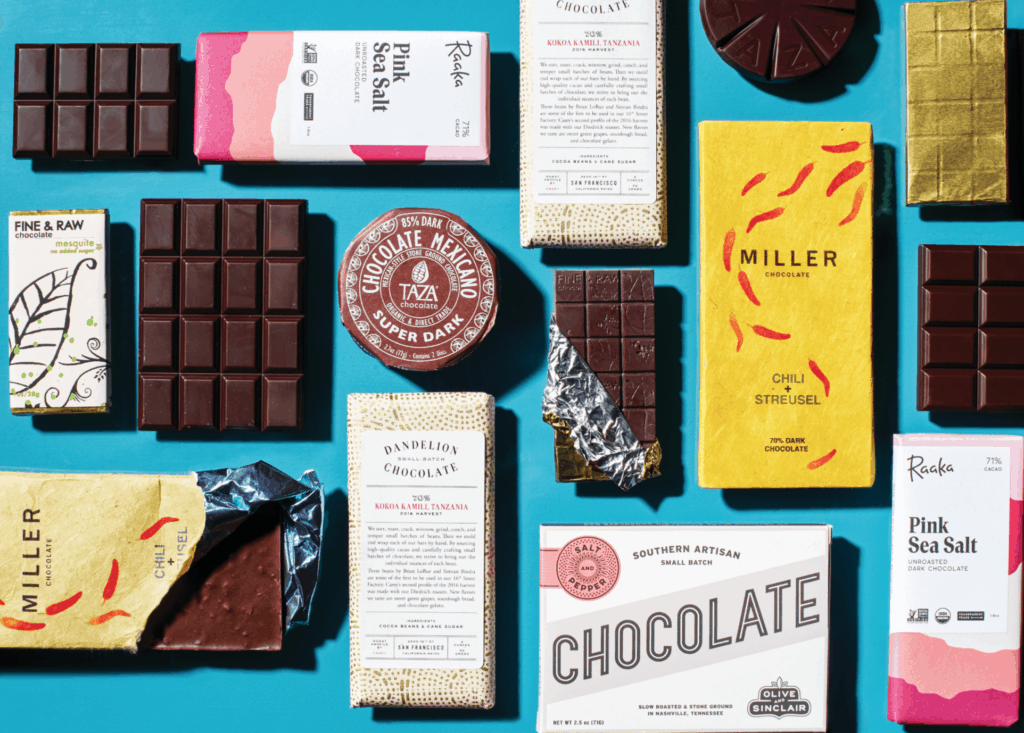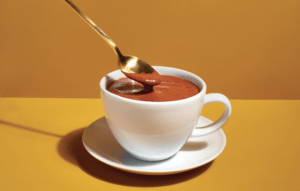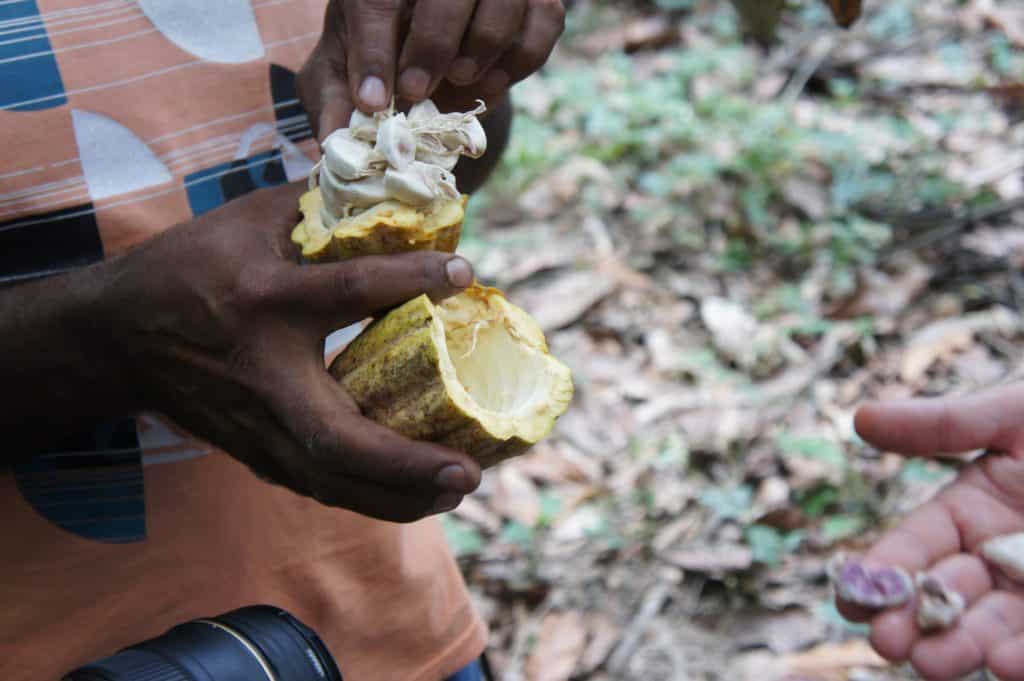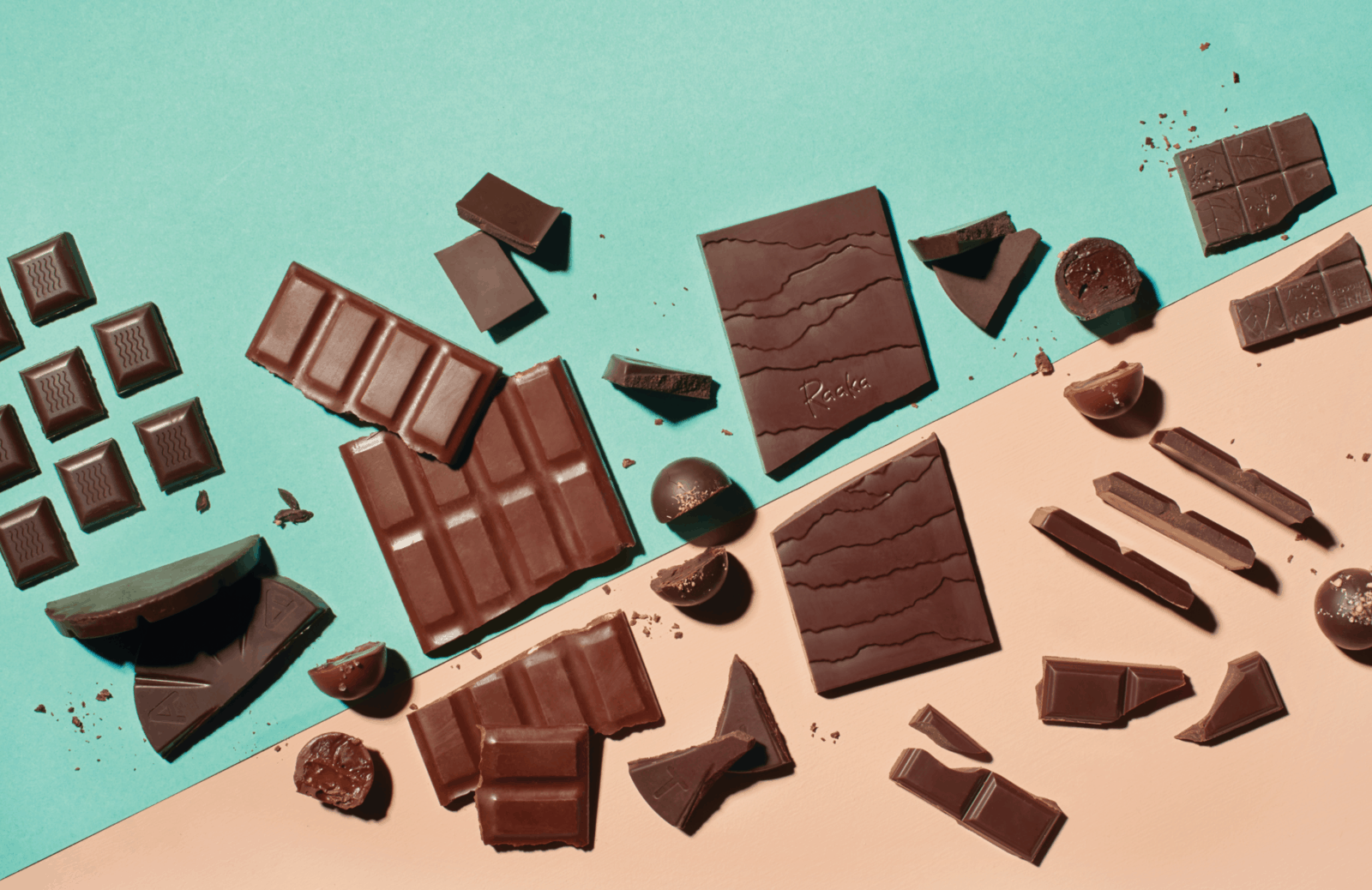
Photographed by Nina Gallant
Styled by Sunny Ricks
Illustrated by Beatriz Gutierrez
Chocolate breeds intensity. Its devotees speak of it as if summoning the dark arts— “death by chocolate,” devil’s food and molten lava cakes, the word “sinful” often thrown in. Some say the darker the better, and this mysterious allure no doubt bolsters its reputation as an aphrodisiac. Whether in chocolate fountains, Valentine’s Day boxes, or intense bars, people get downright lusty for cacao.
Like farmstead cheese, the flavor of chocolate depends on ingredient origins, growing conditions, and fermentation methods. And just like curds, these beans tell a story—of terroir, history, and the farmers and makers who shape them. You could spin a tasting narrative around Mexican fresh cheeses and stone-ground chocolates, or delight dinner guests with disco-era fondues of these imminently meltable ingredients.
We give a slight edge to triple crèmes on date night, but luckily there’s room in this boudoir for both cheese and chocolate. In fact, we think these love birds just might belong together.
Friends in Ferment: Chocolate and cheese share mutual cultured origins
If you want to get along with someone, you need something in common. Fortunately, nibs and curds share not only an abundance of flavor, but the very source of that flavor: fermentation. Both chocolate and cheese are the result of what many affectionately call “controlled rot,” and you can’t make either without bacteria and time.
“It seems so counterintuitive, it’s not something people think to pair together,” said Megan Giller, author of Bean to Bar: America’s Craft Chocolate Revolution and judge for the International Chocolate Awards. Giller conducts private chocolate tastings and says that pairing chocolate and cheese is a frequent topic. “I’ve done so many cheese and chocolate tastings…it really can be an amazing pairing that creates this third flavor.”
Like cheese, the subtle nuance of a piece of chocolate is easiest to pick up in simple, unflavored offerings. Just as you can detect the spicy grasses grazed by a Spanish sheep or the sweet wildflowers consumed by a California goat in the cheese made with their milk, cacao flavor varies by region and context as well. To pick up on these subtle distinctions, Giller recommends cleansing your palate between bites with something plain, like water or crackers.
To pair cheese with chocolate, Giller suggests leaning on a few key groupings. Her favorites include Parmigiano-Reggiano with bright fruity dark chocolates, Taleggio with sea salt bars, and blue cheese with just about any chocolate under 75 percent. Contrast is a good rule of thumb: An earthy bar with a crumbly texture may work with a juicy washed rind; salty bars complement sweet Gouda styles. But commonality can also create new experiences, such as when delicate floral notes in a chocolate mingle with those in an Alpine cheese.
“Chocolate has high cocoa butter content, and cheese has high milk fat content, so those two just get creamier and better together,” Giller said. “Even if you have a chocolate that doesn’t have as much cocoa butter, once you combine it with cheese, that fat really allows the flavors of the chocolate to move around your mouth in different ways.”
How to Taste Chocolate: Pro tips from Megan Giller
1. Look. Just looking at the bars you’ve selected will provide a lot of information. Is the chocolate shiny, or does it have white spots on it? (Shiny means it’s been tempered properly; spots mean it’s not.) How does the color of each bar compare to the others you’ve selected? Are they darker, redder, dryer? Giller starts with the darkest bars and works her way down to milk chocolate, but says that’s a personal preference.
2. Snap. Break a piece in half and listen for a snap—another sign it’s been properly tempered. The chocolate should break cleanly; it should not bend.
3. Smell. Another reason to break off a piece is so you can smell the cut side, which will have stronger aromas. Another way to release aroma is to rub part of the chocolate so it starts to melt.
4. Bite. Put the chocolate in your mouth, chew a few times to get it melting, then let it linger on your tongue. As you do, breathe in and out to aerate the chocolate and release more aromas and flavors.
5. Repeat. Perform these steps for each chocolate. Giller recommends tasting between three and 10 bars in one tasting (she usually uses about six), or taking a break after 10 if you’re going to do more.
________________________________________________________________________________________
Our Favorite Bars
Fine & Raw Mesquite Bar: Earth, campfire, tropical fruit
Origins: New York; Ecuador; Ghana
Pair with: Washed rinds; Iberian thistle-rennet sheep cheeses (like Zimbro or Torta del Casar)
Olive & Sinclair Salt & Pepper Bar: Heat, molasses, saison
Origins: Tennessee; Ghana
Pair with: Pimento or pepperjack
Dandelion 70% Kokoa Kamili Bar: Green grapes, sourdough, lime
Origins: California; Tanzania
Pair with: Fudgy blue cheeses
Nathan Miller Chili + Streusel Bar: Aleppo pepper, cumin, dulce de leche, dried apricot
Origins: Pennsylvania; Peru
Pair with: Extra-milky bloomy rinds (like Camembert di Bufala)
Pump Street Oat Milk 60% Bar: Cinnamon, fudge, porridge, sweet cream
Origins: U.K.; Ecuador
Pair with: Piquant cheeses (like older Pecorino, Manchegos, or Mahon)
Raaka Pink Sea Salt Bar: Brine, maple, red fruit
Origins: New York; Bolivia; Dominican Republic
Pair with: Aged Gouda styles
Taza 87% Dark Bolivia: Malt, mushroom, blueberry, walnut
Origins: Massachusetts; Bolivia
Pair with: Earthy tommes
________________________________________________________________________________________
Recipes:
Make Your Own Bark
Hot Cocoa, Two Ways
A Different Kind of Cocoa Butter
________________________________________________________________________________________






